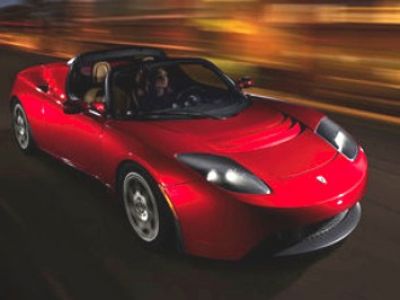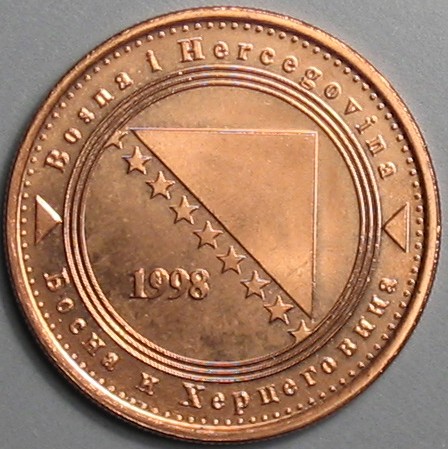Batteries included

Until now, electric cars have been slow, odd-looking and severely limited by their short battery life. But the Tesla Roadster - which can outrun a Ferrari - could change all that. Dan Glaister goes for a test drive
Tuesday August 22, 2006
The Guardian
Something very, very wrong is happening. I'm flying along the windy, cypress-lined roads of Pebble Beach in California being chased by a hairdryer. Or at least that's what it sounds like. "Do you drive many high-performance cars?" asks Mike Harrigan, an executive from Tesla motors. He sits in the passenger seat as I take the wheel of his $100,000 vehicle, and he watches over my progress as if the future of the planet depends on this car - which in a way, it just might do. For the Tesla is a vehicle like no other, an electric car that confounds expectations about enviro-friendly driving. I make reassuring noises, although I'm not sure my Toyota Corolla fits his definition of high performance.
Built by Lotus in England using components from around the world - the battery is from Thailand, the instrument panel from South Africa - and designed by a team of engineers holed up in Silicon Valley, the Tesla is a quiet and very fast riposte to the idea that all electric vehicles have to look like golf carts, move slowly and be recharged at every traffic light. That the Tesla suggests electric vehicles can now be driven by medallion-wearing, louche-living lotharios is progress, of a sort.
Judging by the manufacturer's claims, the Tesla holds its own against other, more traditional high-performance cars. It certainly has the classic looks and the pedigree: it is assembled on the Lotus Elise production line in Norwich. It accelerates more quickly than a Ferrari Spider and fast enough to leave a Mercedes SL550 standing, yet Tesla reckons it costs just one cent per mile in electricity to run and boasts twice the fuel efficiency of hybrid cars such as the Toyota Prius.
Unlike other electric cars, the Tesla has two gears: one a high-torque option to take the car from 0-60 at maximum speed, the second offering a gentler rate of acceleration, taking the car up to its top speed of 130mph. Like the Lotus, the Tesla has a carbon-fibre body, but it is heavier - 900lbs of its total weight of 2,500lbs comes from its battery, made up of 6,831 liquid-cooled, lithium ion cells of the kind used to power laptops. Tesla promises that the battery can be recharged in around three hours, gives a range of 250 miles and has a life of at least 100,000 miles, after which it can be recycled.
When Harrigan first hands me the key, I put it in the slot on the steering column, turn it and wait. Nothing happens. "You have to put your seat belt on, otherwise it won't drive," Harrigan tells me. I buckle up and turn the key. A series of symbols light up on the instrument panel. I turn the key a little more until I hear two faint clicks separated by a few seconds. Harrigan tells me I can go. I assume he must be joking. Where is the growl of the ferocious motor? Can't I at least rev it up a little before I attempt to better Tesla's claim that this car can move from 0-60mph in four seconds?
But there is no growl. In fact, there is no engine. And no exhaust. No clutch. No transmission. Very little of anything, really. Just a rear-mounted motor driven by one very large, very expensive battery pack.
I move the gear stick to first and press the pedal with my foot. For some reason the car moves smoothly forward. With no accompanying noise, other than the hairdryer thing, it is difficult to associate the movement with my action.
Shouldn't you mount a speaker with a recording of a sports car engine, I ask Harrigan. He laughs, unamused.
"You wouldn't believe how many people suggest that," he says. "But this is a zero-emission car and that includes noise. All of us have got used to the whirring noise and we like it."
I press the pedal further and the car moves more swiftly. We rejoin the road and my foot clumps down on the pedal, jabbing the car forward. My head is pushed back against the headrest of the small, hard seat, nausea wells in my stomach. The hairdryer noise is still there, whirring away at my ear, its pitch rising and falling as we speed and slow, like a bumper car. Inside, however, it has a fairly conventional interior and instrument panel. The speedometer is on a dial, the gear stick is on a central console, and it even comes with a Blaupunkt CD player and dash-mounted speakers.
"We worked very hard to make the car readable as a sports car," says Martin Eberhard, who set up Tesla motors with the millions he made from the Rocket eBook handheld device. "We looked at the efforts of the major car companies ... to make an electric vehicle over the past 40 years and my conclusion was that they were made by people who didn't really like to drive."
Eberhard and his team decided to go for the traditional attributes of the sports car: a sleek, stylish body, low, voluptuous lines, a leather interior and a lot of welly. The approach worked. Tesla has sold its first 100 cars before they have even been made.
"We kept getting requests from people saying, 'How do I get on the waiting list?' And we'd say, 'We don't have a list.' And they'd say, 'Look, I'll send you the money, just put me on the list.'"
Eberhard says he caved in, created a waiting list for the first 100 cars, and they sold in three weeks, for $100,000 each, with delivery due early next year.
"That's $10m in the bank," says Harrigan, watching as the crowd of onlookers at Pebble Beach admires the car.
The company was set up with $40m capital, more than half of it provided by another Silicon Valley entrepreneur, Elon Musk, the man who brought the world PayPal. Google's two founders also invested, with one of them, Sergey Brin, ordering two of the cars. George Clooney has paid for one (he also owns another electric vehicle, the Tango, a sort of four-wheeled motorcycle), and a host of other celebrity and industry types, whose names are apparently far too sensitive to be mentioned aloud.
"I have one on order," Chris Paine tells me. Although not a celebrity, Paine has made a film called Who Killed the Electric Car?, an impassioned and convincing tale of big-industry skulduggery, big-money politics and the downtrodden consumer. The film's star is the EV1, an electric car produced by General Motors to satisfy the stringent emission controls introduced by California in the late 1990s and withdrawn just a few years later. "I would never normally buy such an expensive car," says Paine, "but I wanted to be part of the wave. This is resurrecting the electric car."
Back at the Pebble Beach Lodge, a crowd gathers to look at the new arrival. "Wow," says a woman. "Is it Italian?" The bonnet is raised and is found to be disappointingly empty. No gleaming cylinders, no massive engine. Even the battery is hidden - the strip of power cells run across the back of the car and down each side panel, accounting for the hair dryer noise.
The crowd is full of questions and enthusiasm. It surely can't be long before the traditional behemoths of motor manufacturing start to notice the upstart.
"We have the big guys sniffing around, talking about buying technology, even hinting about buying the whole company," says Harrigan.
Ford, Chrysler and Nissan have all made the visit to Tesla's base in California and expressed an interest in the company. But for now, says Harrigan, the high-performance electric car market is probably going to remain in the hands of smaller, non-traditional companies.
"If we sold 2,000 cars in our second year that would be a huge success for us," he says. "For [the big companies] that would be a dismal failure."
Eberhard agrees. "If the cheque was big enough and meant a real commitment from them to build the company then I think that's a good thing," he says.
The bad news in all this is that the car is, for now, only being sold in the US, and even there, only in the few major cities that will host Tesla's service infrastructure. While the electric car requires very little maintenance - certainly nothing like the multibillion-dollar industry fostered by the major car manufacturers - it will require a periodic check. Tesla wants its own engineers to do this, and plans to collect customers' cars on a flat-bed truck, take them to a workshop, rotate the tyres and check the electrical system.
Meanwhile there is the future to be dealt with. Tesla is moving on, developing a four-door, all-electric sedan which, according to Eberhard, will be "big, fast and efficient - don't think Corolla, think BMW. I love to drive and I think cars have been a great source of freedom for people. So I thought what if we could make a car that is nice to drive, it looks nice and would be very efficient? Let's take the philosophy that we'll make the best possible car we can."
I manoeuvre myself out of the small cockpit of the car of the future and wonder how I can get the money to buy the most expensive electrical appliance I've ever seen.
http://www.guardian.co.uk/cars/story/0,,1855488,00.html
|







